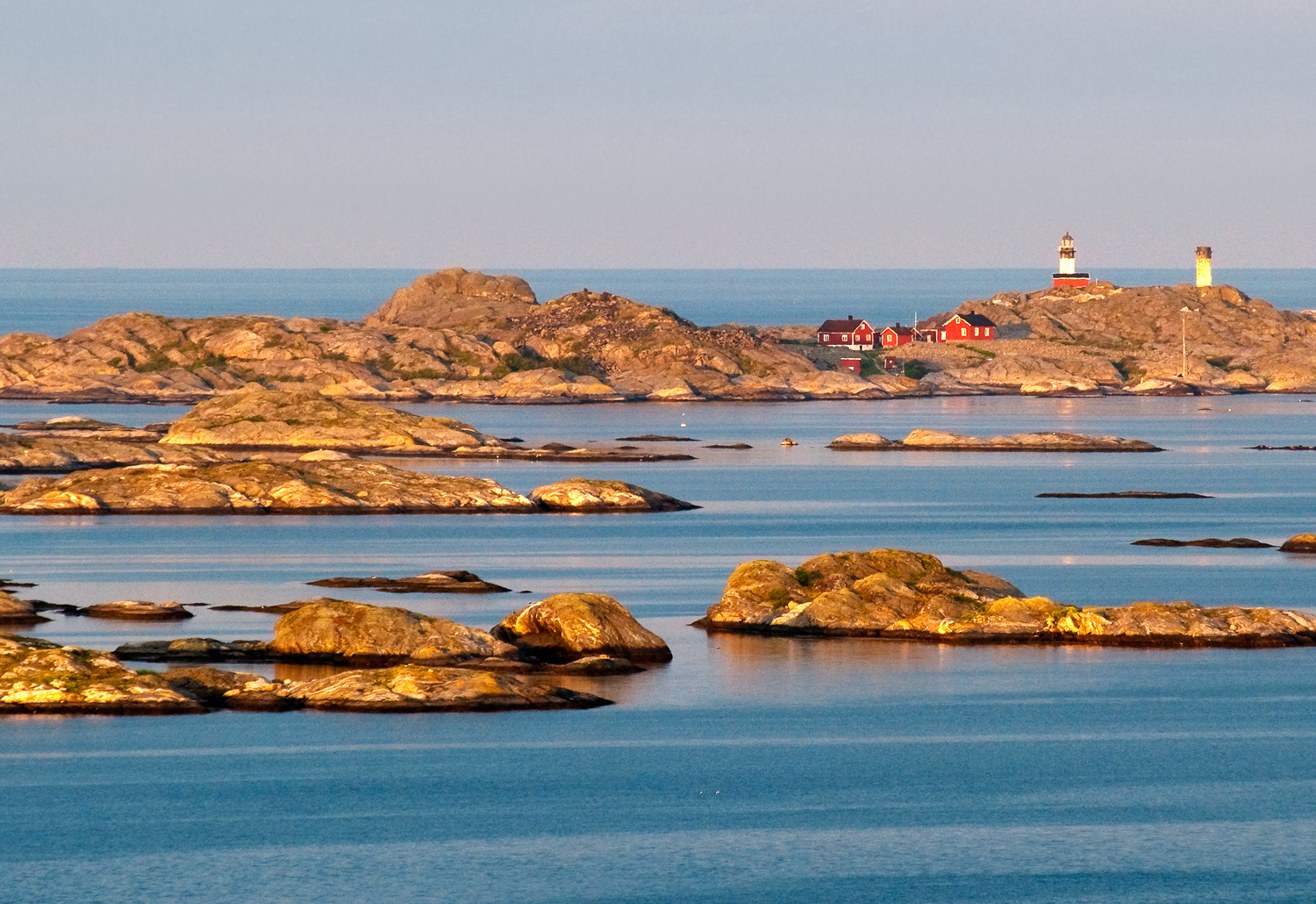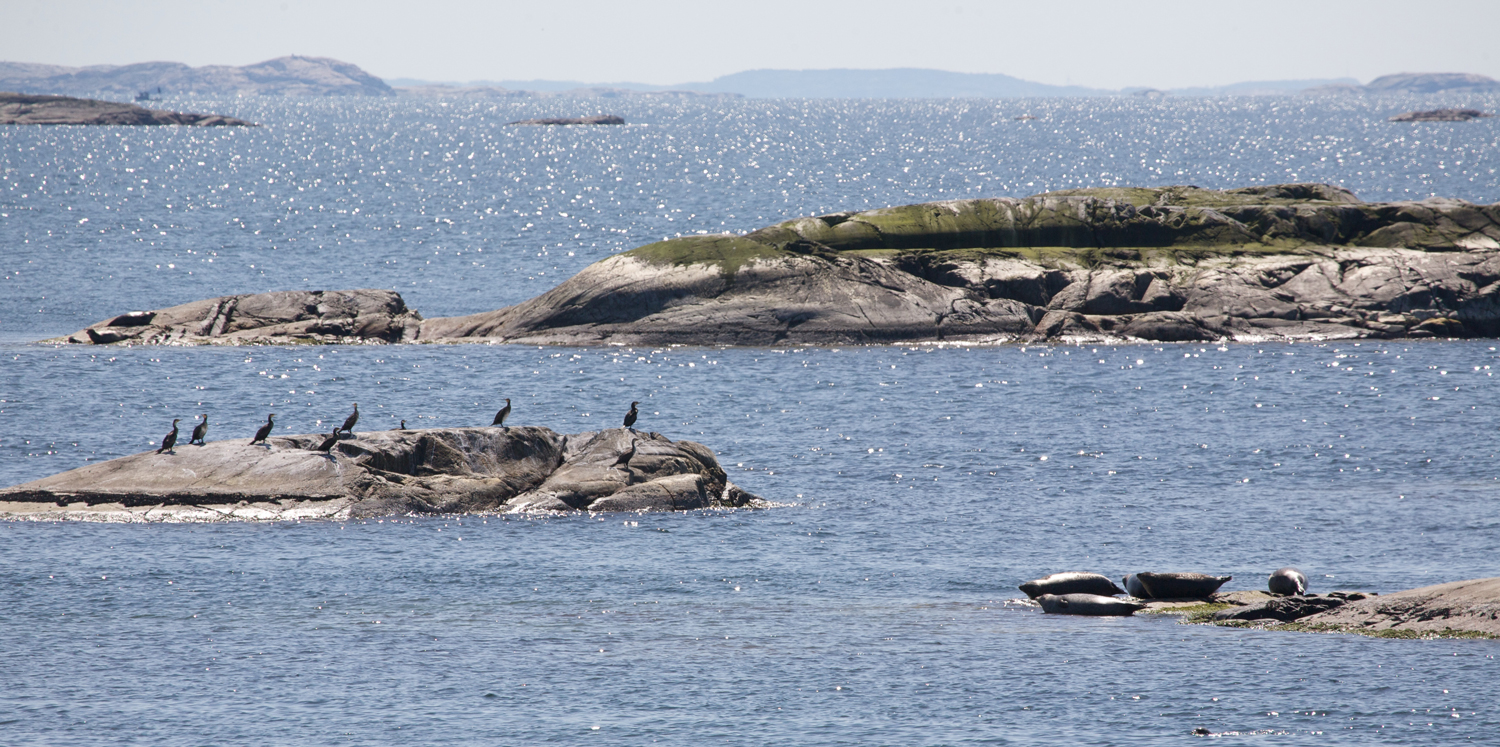KOSTERHAVET NATIONALPARK
Shaped by ancient ice and the lash of wind and water, the Koster Islands' landscape is geologically distinct from that of mainland Sweden.The Koster Islands themselves have long been nature reserves, but since 2009 the unique sea life around the archipelago has been officially recognised and protected with restrictions on fishing, fuel type and anchoring, as well as a speed limit of five knots to discourage commercial shipping. At stake is the welfare of 6,000 different marine species, including 200 found nowhere else on the Swedish coast - notably reefs of "lophelia pertusa" cold-water coral.
Visit Norway's new marine nationalpark Færder Nasjonalpark
Surrounding the main islands lies an archipelago of countless uninhabited skerries. Most are barren, but attractively so. The pinkish-grey granite and gneiss rock (occasionally streaked with volcanic black diabase) forming the islands was left smooth by the ice age, and they barely rise out of the sea, resembling whales breaking the waves or basking seals.
The first marine national park in Sweden was established in 2009. Close to the border with Norway on the west coast, this small archipelago has been turned into a 45-square kilometre national park to protect the unique marine life around the islands as well as its sandy beaches and heath-clad moorland. The Koster islands are one of Sweden's best kept secrets.
Sweden has high hopes for Kosterhavet as scientific project and visitor magnet. Along with the Ytre Hvaler National Park, a similar enclave in adjacent Norwegian waters, it makes up a vast protected zone where a huge range of aquatic life flourishes. This is partly thanks to unusual geological circumstances. Although the gap is narrow, the Koster islands are separated from the mainland by the Koster fjord – a deep groove that plunges to depths of 247 metres in parts, and has the chilly temperatures and rich salinity of open ocean. When such water rubs against the warm shallows of the shore, you have a fertile package. There are 6,000 marine species in Kosterhavet. Forests of kelp shimmer below the waves. Sea anemones twitch. Lophelia pertusa, a cold-water coral, sprouts in the darkness. Redfish skitter. Plaice and cod breed. Crabs scuttle and hide. Rare seabirds – arctic terns and skuas – skim the foaming tops of the breakers.
Kosterhavet is Sweden’s first marine national park. Forests of kelp and meadows of swaying seagrass wait beneath the surface. Crabs and lobsters crawl along the sea floor, and shoals of mackerel dart through the salty water. In the dark depths, stony corals, brachiopods and sea-pens hide. UW-photo by Tomas Lundälv. The image was taken with a camera mounted on the ROV (Remote Operated Vehicle, an unmanned submersible).
Koster Islands Travel Information
Unless you have your own boat, access to the Koster Islands is by the Koster Marin passenger ferry from Strömstad on the mainland or on day tours from various locations, including Strömstad, Tjärnö, and Resö.
The Koster Islands are located off Sweden's west coast, just south of the Norwegian border and about 100 miles north of Göteburg. With the exception of North and South Koster, which are nature reserves, most of the archipelago is part of Kosterhavet Marine National Park, which covers 153 square miles, nearly 98 percent of them ocean. Created in September 2009 together with Norway's adjacent Ytre Hvaler Marine National Park, Kosterhavet is home to an estimated 6,000 marine species, making these waters the most biodiverse in Sweden. On land are an equal number of plant and small animal species, including 1,200 species of butterfly.
Unless you have your own boat, access to the Koster Islands is by the Koster Marin passenger ferry from Strömstad on the mainland or on day tours from various locations, including Strömstad, Tjärnö, and Resö. Adventure tourism is a young but growing industry, with hiking, bicycling, boating, kayaking, diving (the best in Sweden), and shellfish "safaris" possible.
The two largest islands, North and South Koster, are home to approximately 350 people. There are almost no cars on the islands; for the most part, the only motorized vehicles you'll see are the flatbed scooters that residents use for transportation when feet or bikes won't suffice. Lodging ranges from a limited number of seasonal camping cabins to the year-round Ekenäs Hotel.
Rules of Kosterhavet National Park
To avoid disturbing sensitive wildlife and to ensure the enjoyment of visitors there are certain regulations.
Within the National Park it is not permitted to
- dig up plants
- introduce non-native species or populations to the area
- bring dogs which are not on a lead
- start a fire other than at the specially designated places
- cycle or operate motor vehicles other than on roads
- remove or rearrange stones
- collect oysters
- hunt
- camp on Sydkoster or camp between the hours of 10.00 and 18.00 on Tenholmarna, Burholmen, Bockholmen, Store Bror between the 1st July and 15th August. In general camping is only allowed for a maximum of two days in a row at the same place
- pull up, moor boats or lay anchor closer than 50 metres from sandy beaches. Canoes and kayaks can be pulled up onto the beaches if they do not block the swimming areas
- moor or lay anchor for more than two days in a row at the same place
- allow engines to idle and use motorised generators
- drive motorised vehicles within zone A faster than 5 knots between the 15th May and 31st August
- drive motorised vehicles within zone B other than to and from mooring sites
- within seal and bird protection areas disembark onto islands and islets and stay within 100 metres of islands and islets, with the exception of marked routes. The seal protection areas apply 15th May–15th July. The bird protection areas apply: Mörholmen 1st April–15th July, Store Snart, Käbblingarna/Lerskär 1st April–31st July and Torgrimmen 1st April–15th August
- take off or land any airborne craft or fly over the area at an altitude of less than 300 metres
- within areas where the sea bed is protected lay anchor, use scraping or other equipment or methods which can damage the seabed
- without the permission of the County Administrative Board undertake scientific studies or collect red-listed marine species
- organise competitions, set up camps or other organised events with more than 20 participants before consultation with the County Administrative Board.
Other rules for adjacent reserves
Adjacent to the national park, there are some areas which are also nature reserves, including the Koster Islands. Other regulations may therefore apply for visitors to these areas, see the information signs in each of the reserves.





